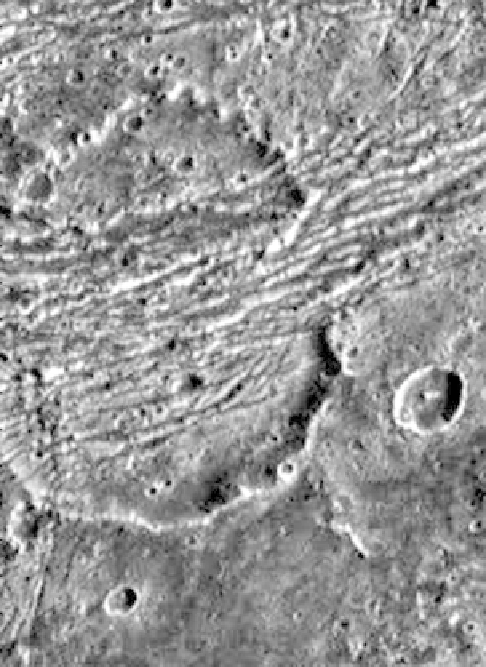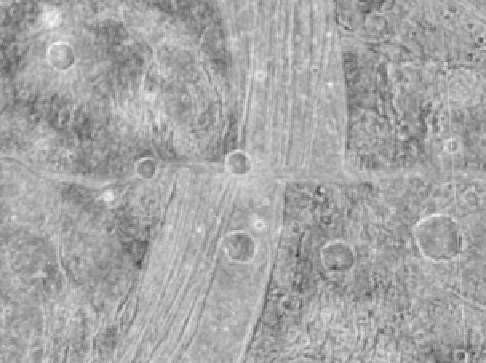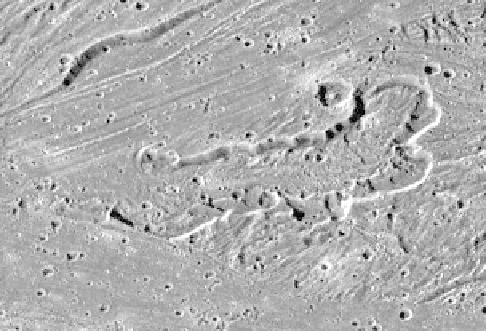Geology Reference
In-Depth Information
Figure 8.43. A Galileo image of Sippar Sulcus, a depression thought
to be a cryovolcanic feature on Ganymede. The depression is about
55 km long and 17
-
20 km wide and has a lobate
flow-like deposit 7
-
10 km wide on the
oor (NASA PIA01614).
slopes are bright. This suggests that volatiles, such as
water-ice, are removed by sublimation from solar heating,
leaving lag deposits of non-ice dark materials behind.
Sputtering also changes surface albedo and occurs in
the presence of radiation (in this case from Jupiter
'
s mag-
netosphere), by which the molecular structure of the vol-
atiles can be changed.
Figure 8.41. This crater in Ganymede
s Nicholson Regio was
fractured and spread apart for about 50%of its diameter by tectonic
extension; the original crater diameter was about 25 km (NASA
Galileo G7GSNICHOL01).
'
8.6.6 Ganymede summary
Ganymede grew from the collapse of the evolving gas and
dust nebula that formed Jupiter and the other satellites in
less than half a million years. Heat generated from accre-
tion melted parts of the satellites to form an outer water
layer, an inner silicate zone, and an iron
silicate core,
forming a differentiated body. With cooling, the surface
of the water froze. As reviewed by Kivelson et al.(
2004
),
the presence of Ganymede
'
s magnetic
field suggests that
the core is currently hot enough to be molten and to
generate an internal dynamo. In addition to the intrinsic
magnetic
field, the
field induced by Jupiter suggests that
Ganymede has a deep liquid ocean sandwiched within the
ice. Interior heat is still being generated, mostly from tidal
interactions of the same sort as that for Io and Europa but
of lower magnitude.
Strains within the icy crust have varied with time and
the evolution of the water layer. Different phases of water-
ice are functions of temperature and pressure that also
change with depth. Some phases, such as ice I (the form
familiar to ice skaters), expand as the water freezes, while
other phases contract to more dense molecular structures.
-
Figure 8.42. Right-lateral strike
slip faulting displaced Dardanus
Sulcus on Ganymede by about 150 km (NASA Galileo
28GSDARDAN01).
-





